Welcome to Lake Manyara National Park, one of Tanzania’s most scenic and ecologically diverse wildlife havens. Nestled at the base of the Great Rift Valley escarpment and named after its shimmering alkaline lake, this compact park offers stunning landscapes and remarkable wildlife encounters. Join Leen Adventures for an unforgettable journey through lush groundwater forests, open savannahs, and colorful lakeshores — where elephants wander gracefully, tree-climbing lions lounge in acacia trees, and flocks of flamingos create a pink glow across the horizon.
Covering approximately 330 square kilometers, of which nearly two-thirds is dominated by the lake itself, Lake Manyara National Park is a gem of Tanzania’s northern safari circuit. Despite its small size, the park’s ecosystems range from groundwater forests and acacia woodlands to hot springs and open grasslands. This diversity supports a rich variety of wildlife, making it a perfect introduction to the wonders of African safaris. Its proximity to Arusha and Ngorongoro Crater also makes it a convenient and rewarding stopover for travelers exploring northern Tanzania.
Lake Manyara’s beauty lies not only in its landscapes but also in its abundant wildlife. The park is renowned for its tree-climbing lions, large herds of elephants, and vibrant birdlife, including thousands of pink flamingos and over 400 recorded bird species. Whether you’re cruising along the lake’s edge, exploring the dense forests, or admiring the views from the escarpment, Lake Manyara offers an unforgettable blend of scenery, wildlife, and serenity — a perfect complement to any Tanzania safari.
Located at the base of the Great Rift Valley in northern Tanzania, Lake Manyara National Park offers a microcosm of Tanzania’s ecosystems in a single park. From dense forests and grassy plains to its expansive lake, it’s a haven for wildlife and birdlife alike.
Geographic Size
330 km²
Mammal Species
100+
Best Time to Visit
June – October (dry season) and November – May (green season)
Yes (since 1981)
Most Famous For
Tree-climbing lions and pink flamingos
Groundwater Forests:
At the park’s entrance, lush evergreen forests fed by underground springs provide a cool and shaded refuge. Here, visitors can encounter troops of baboons, blue monkeys, bushbucks, and sometimes elephants moving silently through the dense foliage.
Acacia Woodlands:
Beyond the forests lie acacia woodlands where Lake Manyara’s famous tree-climbing lions are often seen lounging on branches. Giraffes, impalas, and elephants also roam this area, while hornbills and lilac-breasted rollers add bursts of color to the landscape.
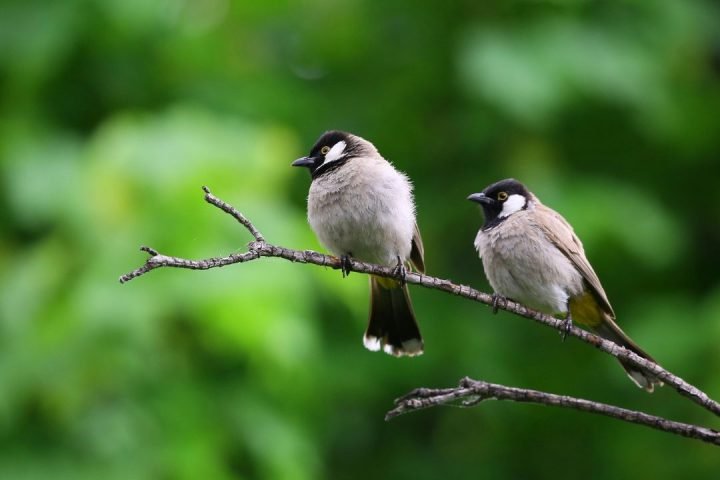
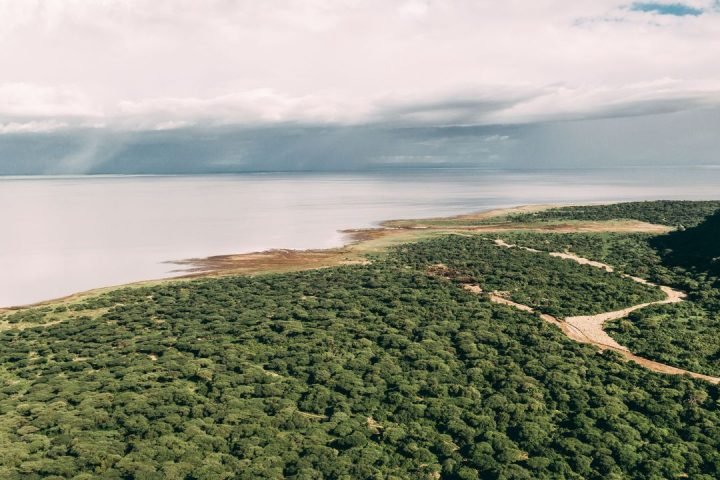
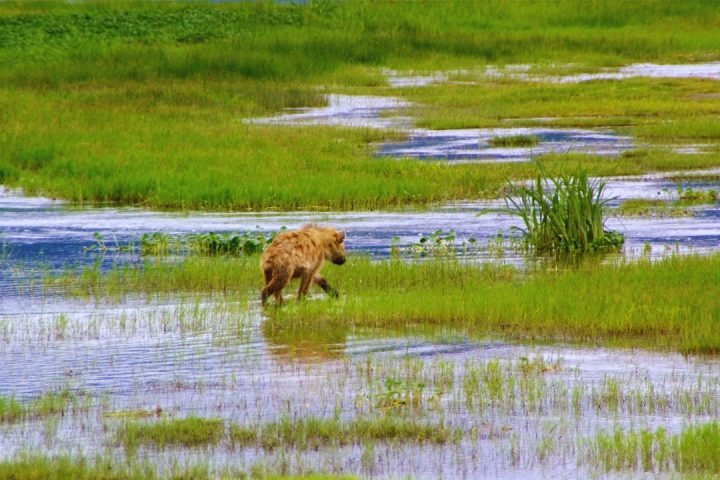
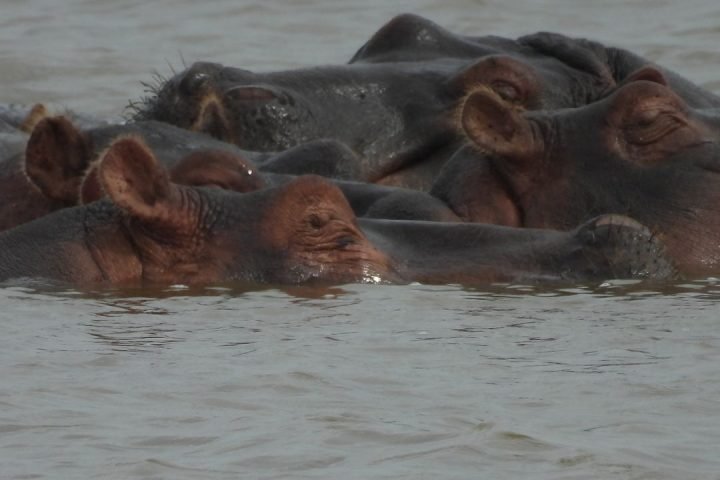
Open Grasslands:
These plains host grazing animals like zebras, wildebeests, and buffaloes. During the dry season, predators such as lions and cheetahs can often be seen hunting across the golden fields.
The Alkaline Lake:
Covering nearly two-thirds of the park, Lake Manyara is an alkaline soda lake that attracts thousands of flamingos, pelicans, and other waterbirds. Its ever-changing shoreline provides a spectacular backdrop for photography and birdwatching.
Hot Springs (Maji Moto):
Located at the southern end of the park, these geothermal springs bubble up from underground, surrounded by mineral-rich deposits. It’s a fascinating geological feature that showcases the park’s volcanic origins.
Wildlife and Birds ofLake Manyara
Lake Manyara National Park may be small, but it offers one of the richest wildlife experiences in East Africa. It is home to elephants, giraffes, zebras, wildebeests, buffaloes, hippos, and warthogs, as well as elusive predators like lions and leopards. The park’s dense forests are alive with troops of baboons — one of the largest populations in Africa — while the open plains host graceful antelopes and playful monkeys. The tree-climbing lions remain its most iconic attraction, often seen resting on acacia branches during the heat of the day.
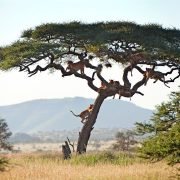
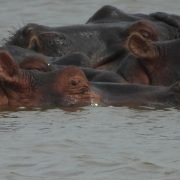
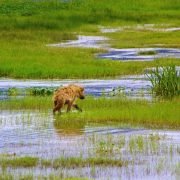
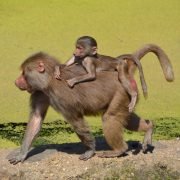
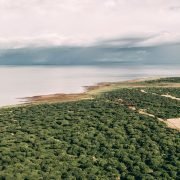
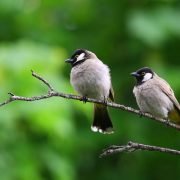
With over 400 recorded bird species, Lake Manyara is a birdwatcher’s paradise. The lake itself is often rimmed with thousands of pink flamingos, joined by pelicans, herons, storks, and cormorants. The woodlands and forests provide shelter for colorful species like the African fish eagle, silvery-cheeked hornbill, and malachite kingfisher. Migratory species from Europe and Asia arrive seasonally, ensuring a dynamic birding experience year-round.
Lake Manyara enjoys a moderate tropical climate with distinct wet and dry seasons.
Dry Season (June–October): Ideal for game viewing as animals gather near water sources and vegetation is sparse.
Wet Season (November–May): The park transforms into a lush paradise with abundant birdlife and newborn animals.
Temperatures generally range between 22°C and 30°C, making it a comfortable destination in any season.
Serengeti National Parks FAQ's
Lake Manyara National Park is situated in northern Tanzania, approximately 126 kilometers (about two hours) west of Arusha. It lies along the main safari route leading to Ngorongoro Crater and Serengeti National Park.
The park spans around 330 square kilometers, with nearly two-thirds of its surface area occupied by the alkaline Lake Manyara.
Lake Manyara is renowned for its iconic tree-climbing lions, impressive elephant herds, and the thousands of flamingos that gather along its shimmering lakeshore.
Visitors can encounter elephants, giraffes, zebras, wildebeests, hippos, buffaloes, large troops of baboons, and several antelope species. Predators like lions and leopards are also present, particularly within the park’s lush woodlands.
Yes. The park is secure and well-managed. Guided safaris with licensed and experienced operators—such as Leen Adventures—ensure a safe, informative, and memorable wildlife experience.
Lake Manyara is beautiful throughout the year.
Dry Season (June–October): Best for wildlife viewing.
Wet Season (November–May): Ideal for lush scenery, birdwatching, and photography.
The park is easily accessible by a 2-hour drive from Arusha. Visitors can also fly into the Lake Manyara Airstrip from Arusha, Serengeti, or Zanzibar for quicker access.
Pack light, neutral-colored clothing, sunscreen, a hat, binoculars, insect repellent, and a good camera. A light jacket is recommended for cool mornings and evenings.
Yes. Travelers can choose from several luxurious options such as Lake Manyara Serena Safari Lodge, Escarpment Luxury Lodge, and &Beyond Lake Manyara Tree Lodge. Additionally, a variety of mid-range and budget lodges are available in nearby Mto wa Mbu.
More Facts